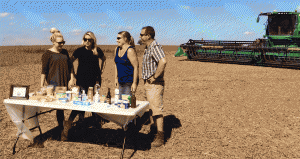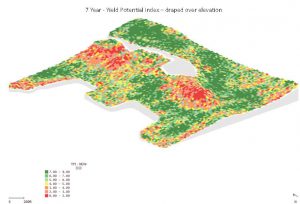Cropside: OCC trials
AGRONOMIC INFORMATION FROM ONTARIO'S CROP SPECIALISTS

A COMMON QUESTION regarding Ontario Corn Committee (OCC) hybrid trials is — how valid are results if practices on my farm are more intensive than the hybrid trials? To help answer this, Intensive Management (IM) trials were conducted at eight OCC hybrid trial locations as a two-year pilot project in 2015 and 2016. A key objective of the IM trials was to investigate the nature of yield response between “standard” and “intensive” management practices (Table 1) across many different hybrids.

Yield responses to intensive management practices were observed at all locations in 2016 and ranged from seven to 31 bu/ac (Figure 1). Assuming a corn price of $4.50/bu, a yield response of 17.5 bu/ac was required to breakeven for IM practices. Given this, an economic response was evident at three of the eight trials.
FIGURE 1. COSTS AND AVERAGE YIELD RESPONSE OF HYBRIDS TO INTENSIVE MANAGEMENT PRACTICES ACROSS ALL 8 IM TRIALS IN 2016.
* Assumes $4.50/bu corn price
Credit: Dave Hooker, University of Guelph Ridgetown Campus
When looking at the nature of yield response by hybrid across locations, responses to IM practices appeared to be slightly greater for hybrids that yielded less than average under standard practices, and slightly less for above average yielding hybrids. An example from the 2016 Belmont and Exeter trials where this relationship was pronounced is shown (Figure 2). Despite this, hybrids that were higher yielding under standard practices still tended to be higher yielding under intensive practices as well.
FIGURE 2. AVERAGE STANDARD AND INTENSIVE MANAGEMENT PRACTICE YIELDS OF HYBRIDS AT BELMONT AND EXETER IN 2016.
Credit: Dave Hooker, University of Guelph Ridgetown Campus
One limitation of the “all or nothing” intensive treatment is that it is difficult to tell which of the three factors contribute the most to the yield response. This is also only one year of data, so should be interpreted with caution.
Full yield results from the 2015 IM trials are currently available at Gocorn.net, while 2016 results will be posted in the near future. •












